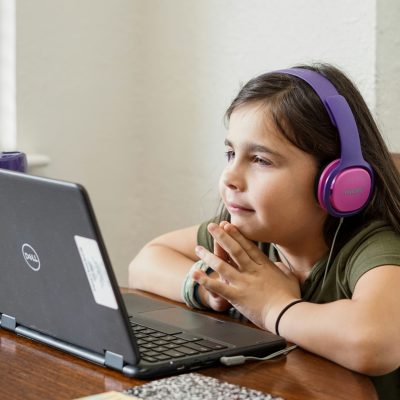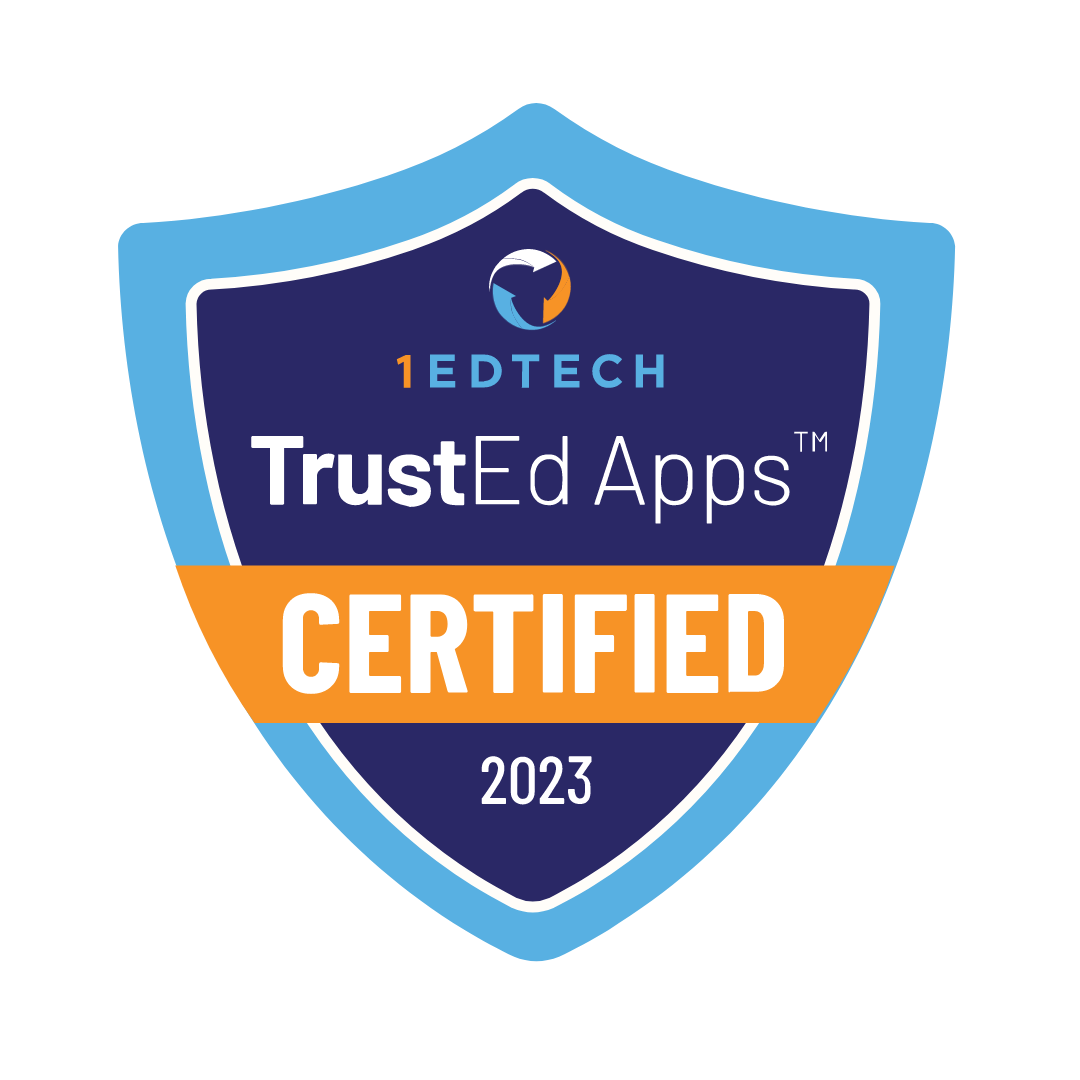Виртуальное обучение - это новый способ получения знаний. Он использует интернет-ресурсы. У него есть захватывающие преимущества. Но у него есть и уникальные проблемы. Но вы должны их преодолеть. Возможно, живое обучение покажется вам интересным и интерактивным. Но вам может быть трудно справиться с самостоятельным обучением. Здесь вас ждет неизведанная арена. Классные комнаты в цифровом мире уже готовы к использованию. Для начала мы можем набросать общую картину этой модели.
Виртуальное обучение предлагает гибкий график. Оно также предлагает легкий доступ и возможность учиться в своем собственном темпе. Кроме того, оно позволяет студентам получать доступ к материалам курса в любое время. Кроме того, они могут присоединиться к занятиям издалека, если не находятся там.
Содержание
- 1 Изучение модели виртуального обучения
- 2 Сравнение традиционной и виртуальной систем образования
- 3 Распаковка преимуществ виртуального обучения
- 4 Преодоление трудностей виртуального обучения
- 5 Использование онлайн-технологий для оптимального обучения
- 6 Тематические исследования: Истории успеха в виртуальном обучении
Изучение модели виртуального обучения

Виртуальное обучение получило широкое развитие. Его также называют онлайн-образованием. Оно предоставляет студентам множество возможностей для получения хорошего образования. Они могут делать это в любое время и в любом месте. При таком способе обучения используется интернет. Он обеспечивает обучение. Он гибкий и содержательный. Он разрушает барьеры расстояния. Он позволяет людям со всего мира получить доступ к хорошему образованию.
У виртуального обучения есть большое преимущество. Оно доступно. Более того, виртуальное обучение способствует инклюзивности. Это происходит благодаря тому, что оно учитывает различные стили и предпочтения.
Живое обучение позволяет ученикам и учителям взаимодействовать. Оно происходит в режиме реального времени. Оно способствует интерактивному и динамичному обучению. Оно обеспечивает мгновенную обратную связь. В нем есть совместные обсуждения и живые демонстрации. Оно копирует многие элементы традиционных классов. В нем используются цифровые платформы.
Напротив, асинхронное обучение расширяет возможности студентов. Они могут сами выбирать путь обучения. Оно учитывает различные графики и обязательства. Учащиеся могут получать доступ к материалам курса, лекциям и ресурсам в удобное для них время. Это позволяет проводить индивидуальное обучение. Например, возьмем работающего специалиста. Они получают больше знаний благодаря онлайн-программе. Асинхронное обучение обеспечивает гибкость. Оно позволяет совмещать работу с учебой.
У виртуального обучения есть свои особенности. Они делают его широко привлекательным. Они позволяют людям получать гибкое, инклюзивное образование.
Now, let’s compare the old education model to the new one. This will help us understand education’s changes.
Сравнение традиционной и виртуальной систем образования

Сравнивая традиционное образование с виртуальным, вы должны учитывать множество факторов. Они формируют опыт. Эти факторы играют большую роль. Одно из ключевых различий заключается в том, насколько гибкой и доступной является каждая система.
Гибкость и доступность
Традиционное образование имеет установленный график. Оно требует физического присутствия. Виртуальное обучение имеет гибкий график. Оно позволяет получать доступ к материалам курса из любого места. Студенты онлайн-программ могут учиться в своем собственном темпе. Они могут совмещать учебу с другими делами. Такая гибкость отлично подходит для работающих взрослых. Она также подходит для родителей или людей с ограниченными возможностями здоровья.
Виртуальное обучение имеет это преимущество. Это не просто удобно. Рассмотрим следующий сценарий. У студента есть обязанности или ограничения. Они не позволяют ему посещать очные занятия. Они живут далеко от школы или имеют инвалидность, что затрудняет передвижение. В этих случаях виртуальное образование бесценно. Оно позволяет людям получить доступ к высококачественному образованию. Такое образование может оказаться недоступным.
Взаимодействие и вовлечение
В традиционных системах люди взаимодействуют лицом к лицу. Такая организация позволяет быстро получать обратную связь. Она также поощряет активное участие. Инструкторы и сверстники общаются напрямую. Это позволяет вести оживленные беседы. Они могут вместе решать проблемы. Но в онлайн-классах люди полагаются на цифровые инструменты. Этим инструментам может не хватать такого же быстрого вовлечения.
Онлайн-платформы предлагают форумы. Есть видеозвонки и обмен сообщениями. Но трудно сравниться с богатством общения при личной встрече. Отсутствие присутствия может заставить людей чувствовать себя отстраненными. Это также может уменьшить спонтанность в обмене мнениями.
Индивидуальное обучение
У виртуального образования есть ключевое преимущество. Оно предлагает индивидуальный подход к обучению. Они отвечают различным стилям обучения. Они позволяют учиться самостоятельно. Традиционное образование отличается. В нем, как правило, используется более стандартизированный подход. В нем есть заранее установленные учебные планы и темпы обучения.
Imagine two students. One excels in math but struggles with literature. The other learns best through doing things. They don’t like lectures. In a traditional classroom, it is hard for teachers to meet each student’s needs. But, in virtual learning, adaptive tech allows for custom delivery. It’s based on a person’s strengths. And, their weaknesses. It creates a more tailored learning experience.
Сравните эти ключевые части обеих систем. У каждой из них есть очевидные, уникальные преимущества. Эти преимущества относятся к разным стилям обучения. Они также подходят для разных ситуаций. Традиционное образование процветает при личном общении. Ему также важна быстрая обратная связь. Виртуальное обучение выделяется на фоне других. Оно адаптируемо и доступно. У каждой системы есть свои достоинства. Это говорит о важности. Это говорит о необходимости учитывать стили обучения. Вы должны учитывать их при выборе образовательного маршрута.
We’ve seen the differences. They are between traditional and virtual education. Now, let’s look at the clear benefits of virtual learning. It offers more than standard methods.
Распаковка преимуществ виртуального обучения
Виртуальное обучение отличается гибкостью. Это одно из его достоинств. Представьте себе, что вы освободились от жесткого расписания. Вместо этого вы получаете доступ к материалам курса тогда, когда они вам нужны. Это означает, что у вас есть свобода учиться в своем собственном темпе. Вы можете составить расписание, которое будет полностью соответствовать вашим потребностям.
Такая гибкость может быть очень ценной. Она помогает студентам справиться с конфликтами. Это может быть работа на неполный рабочий день или семейные обязанности. Обучение в своем собственном темпе может дать таким студентам чувство контроля. Это позволяет им контролировать свое образование. Это снижает стресс и улучшает самочувствие.
Кроме того, онлайн-платформы предоставляют множество ресурсов. Эти ресурсы выходят за рамки традиционных учебников. От симуляторов до мультимедиа. Эти цифровые ресурсы делают обучение более качественным. Они делают его более увлекательным. Кроме того, они углубляют понимание предмета.
Представьте, что вы погружаетесь в урок истории. Вы делаете это с помощью захватывающих 3D-моделей. Или вы изучаете сложную науку. Это происходит с помощью интерактивных визуальных средств. Эти динамичные ресурсы делают обучение увлекательным. Они также соответствуют различным стилям обучения. Они также соответствуют предпочтениям. Благодаря этому ученикам легче усваивать сложные темы.
Например, при изучении геологии помогают симуляторы. Они цифровые. Они показывают извержения вулканов. Они также оживляют изучение тектоники плит. Традиционные материалы не могут этого сделать. Симуляции хорошо связаны с предметом.
Кроме того, онлайн-обучение позволяет создавать индивидуальные маршруты. Эти пути предназначены для различных способностей к обучению. Их подбирают портные. Адаптивное программное обеспечение может подстраиваться. Оно может подстраиваться под скорость каждого ученика. Оно также может подстраиваться под их успехи. Она дает им индивидуальную обратную связь. Оно поддерживает их уникальные пути развития.
Такой подход может очень помочь студентам. У них разные потребности в обучении. Например, ученик испытывает трудности с математикой. Он может получить помощь через специальные учебники. Или же они могут использовать адаптивные упражнения. Специально разработанные для решения их проблем.
Аналогично, студент хорошо знает предмет. Дополнительное обучение может стать для них вызовом. Обучение согласуется с их знаниями. Благодаря этому они не теряют интереса. Кроме того, они быстро прогрессируют.
Виртуальное образование предлагает гибкий график. Оно также предлагает доступ ко многим ресурсам. Оно также предлагает индивидуальные учебные маршруты. Это меняет отношение студентов к курсу. Они подстраивают свое обучение под свои потребности.
Мы ориентируемся на новые преимущества. Они появились благодаря виртуальному обучению. Теперь давайте поговорим о проблемах этой системы образования.

Virtual learning has many advantages. But, students may face challenges in it. Let’s look at some of these challenges. Let’s discuss how to handle them well.
Отсутствие личного взаимодействия
У виртуального обучения есть одна главная проблема. Ему не хватает личного общения. Естественно, что вам будет не хватать возможности в любой момент задать вопрос своему преподавателю. Кроме того, обсуждать задания с одноклассниками. Делайте это лично. Такое общение поможет сразу же прояснить ситуацию. Кроме того, они создают условия для социального обучения.
В обычном классе ученики могут обсуждать происходящее. Они могут задавать вопросы. Они получают мгновенную обратную связь. Они получают ее от своих учителей и сверстников. Такое взаимодействие способствует развитию сообщества. Оно также помогает лучше понять материал. Без этого ключевого личного взаимодействия Ученикам будет сложно почувствовать связь. Им может быть трудно подключиться к нему. Им также может быть трудно обратиться за помощью. Отсутствие визуальных и вербальных подсказок затрудняет процесс. Студенты не могут сразу понять сложные идеи.
Технические проблемы
Виртуальное обучение также имеет технические проблемы. Они встречаются часто. Технические проблемы могут нарушить ход виртуальных занятий. К ним относятся проблемы с Интернетом. Они также включают сбои в программном обеспечении. Они влияют на процесс обучения.
Представьте, что вы работаете над важным заданием. И тут у вас разрывается интернет-соединение. Или платформа, которую вы используете, дает сбой. Неожиданные технические неполадки случаются. Они могут быть очень неприятными и мешающими. Из-за них студенты могут пропустить важную информацию или сроки. Технические проблемы влияют на оценки. Они также вызывают стресс у студентов. Они с трудом ориентируются в цифровом ландшафте.
Практический опыт
В некоторых областях требуются практические навыки. Они также требуют лабораторного обучения. Они не могут быть хорошо преподаны онлайн. Это большая проблема для студентов, изучающих эти дисциплины.
Студенты стремятся к карьере в различных областях. Среди этих областей - здравоохранение. Они также включают науку, инженерию и искусство. Им часто нужен практический опыт. Это помогает им овладеть ключевыми навыками. Симуляторы и демонстрационные образцы могут дать возможность познакомиться с виртуальными вещами. Они дают определенный опыт. Но они не могут полностью повторить обучение на практике. Они происходят в физической среде. Отсутствие доступа к лабораториям и мастерским ограничивает студентов. Они не могут отрабатывать техники. Они также не могут проводить эксперименты. Они не могут получить практические знания. Они должны знать это для своего карьерного роста.
Решение этих проблем требует активных действий. Для этого также необходимы адаптивность и хорошая коммуникация. В этих шагах должны участвовать учителя. В них также должны участвовать ученики и родители. Необходимо создать прочные системы поддержки. Им нужны стратегии для преодоления этих препятствий. Они должны обеспечить получение учащимися высококачественного образования. Они должны сделать это, несмотря на все трудности.
Мы принимаем постоянно меняющееся виртуальное обучение. Мы должны использовать технологические инструменты для лучшего обучения. Давайте посмотрим, как технологии могут улучшить онлайн-школу.
Использование онлайн-технологий для оптимального обучения

Сегодня существует множество онлайн-инструментов и платформ. Они произвели революцию в том, как мы учимся. Давайте рассмотрим некоторые из лучших способов использования онлайн-технологий. Они могут создать богатый и захватывающий опыт обучения.
Интерактивные средства обучения
Они являются порталами в новые миры. Они включают в себя VR-симуляторы. В них также есть образовательные игры. Они позволяют студентам исследовать и изучать темы. Традиционные учебники на это не способны. Представьте, что вы изучаете историю. Вы делаете это, гуляя по старым руинам. Или изучаете науку, исследуя глубины океана. И все это не выходя из дома. Эти инструменты делают обучение веселым и увлекательным. Они также помогают закрепить понимание на собственном опыте.
Инструменты привлекают внимание. Исследования показали следующее. Они могут значительно улучшить память. Они также могут улучшить понимание. Присоединяясь к процессу, ученики глубже его понимают. Оно остается с ними гораздо дольше, чем пассивное обучение.
Платформы для совместной работы
В цифровую эпоху сотрудничество не знает границ. Образовательные платформы и видеоинструменты. Они позволяют ученикам работать вместе. Они могут делиться идеями и дискутировать. И неважно, насколько далеко они находятся друг от друга. Это создает сообщество. Это помогает виртуальным ученикам почувствовать связь. Это позволяет объединить различные мнения. Это улучшает процесс обучения.
Кроме того, платформы для совместной работы имитируют реальную рабочую обстановку. Они готовят студентов к будущей профессиональной деятельности. В этих профессиях очень важна работа в команде. Цифровое сотрудничество также играет ключевую роль. Такой опыт также способствует развитию важных социальных навыков. К ним относятся коммуникабельность, эмпатия и способность к адаптации.
Программное обеспечение для адаптивного обучения
Адаптивное программное обеспечение для обучения - это как репетитор. Оно подстраивается под уникальные потребности каждого ученика. Адаптивное программное обеспечение может регулировать темп. Оно также может регулировать сложность и содержание в соответствии с учебным процессом ученика. Для этого он анализирует данные об успеваемости ученика. Такой подход персонализирует. Он делает виртуальное образование лучше. Он также способствует поддержке. В нем студенты чувствуют себя понятыми и воодушевленными.
Представьте себе сценарий. Затрудняющиеся ученики получают помощь там, где она им нужна. Продвинутым ученикам всегда брошен вызов. Они должны достигать новых высот. Программное обеспечение адаптивно. Оно следит за тем, чтобы каждый ученик не сбивался с пути. Она гарантирует, что каждый ученик полностью раскроет свой потенциал.
Эти новые виды использования онлайн-технологий переосмыслили возможности образования. Они дают учащимся интерактивный опыт. Они также способствуют сотрудничеству. И они адаптируют обучение к индивидуальным потребностям.
Тематические исследования: Истории успеха в виртуальном обучении
Давайте рассмотрим несколько примеров из реальной жизни. Они показывают, как виртуальное обучение оказывает большое влияние. Один из примеров - Университет Кентукки. В нем было установлено более 33 000 планшетов iPad. Планшеты обеспечивают равный доступ. Они предоставляют доступ к образовательным инструментам. Эта работа значительно улучшила опыт студентов. Она также помогла преподавателям. Это сделало работу более эффективной и инклюзивной.
Кроме того, школы и университеты используют учебные программы Apple. Это позволило им внедрить передовые методы обучения. Эти методы делают обучение более увлекательным. Они также делают его более эффективным. Это приносит пользу студентам. Это также помогает преподавателям. Они могут использовать новые подходы. Эти подходы обеспечивают высококачественное образование.
Художественная интеграция
Кроме того, художественные школы и университеты включили в свои программы iPad и Apple Pencil. Это дополнение обогащает творческое самовыражение студентов. Студенты могут использовать эти инструменты для совершенствования своего искусства. Это приводит к впечатляющим результатам в искусстве и дизайне.
Проще говоря, кисть и холст - необходимые инструменты для художника. Цифровые инструменты Apple теперь необходимы художникам. Они работают в творческих сферах.
Влияние на общество
Виртуальное обучение влияет не только на оценки. Студенты используют технологии Apple. С ее помощью они создают инновационные приложения. Эти приложения решают социальные и экологические проблемы. Они стали ключевыми. Они способствовали развитию науки. Они также помогли сохранить природу. Они также решали социальные проблемы.
Например, многие школы и районы используют продукцию Apple. С ее помощью они обучают школьников кодированию и прививают им ключевые навыки XXI века. Кроме того, использование этой технологии сыграло решающую роль. Оно способствовало разнообразию в классах. Оно также способствует инклюзии. Она создает благоприятную среду. Она охватывает всех учащихся.
Исследователи и ученые используют технологии Apple и за пределами академических кругов. Они используют ее для измерения уровня загрязнения воздуха. Они также используют ее для разработки решений в области сельского хозяйства. Они также используют ее для защиты окружающей среды. Они хотят, чтобы она прослужила долго. Это говорит о том, что виртуальное обучение имеет множество преимуществ. Оно способствует позитивным изменениям во многих областях.
Эти истории и свидетельства очень ценны. Они несут в себе понимание. Вы можете получить их, изучив их. Они демонстрируют широкое влияние виртуального обучения. Технология Apple изменила образование. Она также помогла обществу развиваться. Она помогла обществу внедрить инновации.
Приведенные выше примеры демонстрируют возможности виртуального обучения. Технология Apple питает и преобразует его. Мы продолжаем ориентироваться в цифровой эпохе. Эти истории свидетельствуют о большом влиянии онлайн-образования. Оно может влиять на людей, сообщества и весь мир.
Успех вашего ребенка в будущем - наша главная цель в онлайн-школе Legacy. Посетите наш сайт чтобы изучить многочисленные возможности онлайн-школы Legacy.
Ознакомьтесь с программами онлайн-школы Legacy:
Начальная школа онлайн-школы Legacy Программа задает высокую планку. Это качественное образование. Мы стремимся разжечь любопытство. Мы также стремимся развивать творческие способности. Мы предлагаем сильную учебную программу. В этом нам помогают квалифицированные педагоги.
Средняя школа Legacy Online обеспечивает цифровое образование. Она предназначена для учеников средней школы. Школа гордится тем, что предлагает живые онлайн-уроки, которые ведут сертифицированные преподаватели. Занятия проходят в режиме онлайн и в интерактивном режиме.
Онлайн-школа Legacy это уникальный метод онлайн-обучения, специально разработанный для старшеклассников. Он сочетает в себе синхронное обучение, широкий спектр педагогических методов и акцент на доступности.
Онлайн-школа Legacy предлагает лучшие учебный план
Наша строгая учебная программа гарантирует, что выпускники будут хорошо подготовлены к университетам и рабочим местам по всему миру. Кроме того, наши яркие виртуальные клубы объединяют студентов по всему миру.









